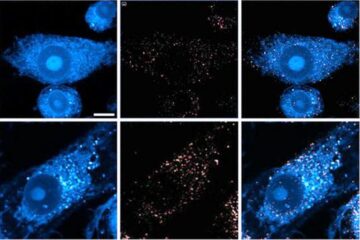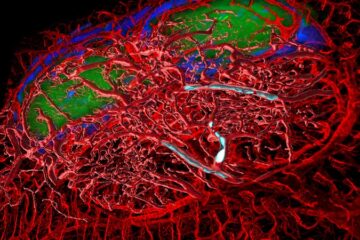Engineering a solution to waste crisis

Engineers at Cardiff University, UK, are using the latest technology to update a time-honoured practice – and turn a serious environmental problem into a valuable resource.
Modern industrial societies generate vast quantities of waste – the UK alone produces more than a million tonnes every day. A large proportion of it has traditionally been put into “landfill” – literally dumped into large holes in the land, but space is running out and the damage to the environment from landfill sites is of increasing concern.
Predictions indicate that increases in municipal waste, the main contributor to landfill, will more than double the amount of landfill gas generated in the next 20 years, a very high portion of which is methane, one of the most aggressive “greenhouse” gases.
To help deal with these increases, Cardiff researchers, led by Dr Keith Williams and Dr. Tony Griffiths in the School of Engineering, are conducting large-scale experiments into generating compost from municipal waste.
At a specially-constructed site in Carmarthenshire, West Wales, they are analysing constant readings of temperature, gas flows, and gas composition, to develop the most efficient ways of producing valuable compost from material which would otherwise be discarded.
Through this work, largely sponsored by Carmarthenshire Environmental Resources Trust (CERT), they are finding that, by more actively managing the composting process, they can speed up the breakdown of organic material enabling them to achieve in eight weeks a quality of compost that would take a year under traditional methods.
“This work is producing solutions to no fewer than four serious environmental concerns,” said Dr. Williams.
“Firstly, it disposes of much domestic waste; secondly, it helps overcome the worldwide depletion of soil quality; thirdly, it reduces emissions of methane – the highly aggressive greenhouse gas produced by landfill disposal; and fourthly, it will help save peat beds which are threatened because of their use as a fertiliser.”
The composting project is one of many across several disciplines at Cardiff University dealing with the crisis of what mankind should do with its increasing quantities of waste.
The University has been chosen as the base for the Centre of Excellence in Waste Research, a Wales-wide initiative backed by the Welsh Assembly Government, and mainly sponsored by EB Nationwide.
The work is featured in a major international television campaign this week. Research TV is a joint venture involving some of the UK’s leading research-led universities. Cardiff University has joined Oxford, Warwick, Kings College London and Birmingham, as well as the Economic and Social Research Council to promote world class research in British universities to an overseas audience.
The waste management project features in a television news feature being distributed to news channels around the world this week. Further details of Research TV are available at http://www.research-tv.com.
Media Contact
All latest news from the category: Ecology, The Environment and Conservation
This complex theme deals primarily with interactions between organisms and the environmental factors that impact them, but to a greater extent between individual inanimate environmental factors.
innovations-report offers informative reports and articles on topics such as climate protection, landscape conservation, ecological systems, wildlife and nature parks and ecosystem efficiency and balance.
Newest articles

Zap Energy achieves 37-million-degree temperatures in a compact device
New publication reports record electron temperatures for a small-scale, sheared-flow-stabilized Z-pinch fusion device. In the nine decades since humans first produced fusion reactions, only a few fusion technologies have demonstrated…

Innovative microscopy demystifies metabolism of Alzheimer’s
Researchers at UC San Diego have deployed state-of-the art imaging techniques to discover the metabolism driving Alzheimer’s disease; results suggest new treatment strategies. Alzheimer’s disease causes significant problems with memory,…

A cause of immunodeficiency identified
After stroke and heart attack: Every year, between 250,000 and 300,000 people in Germany suffer from a stroke or heart attack. These patients suffer immune disturbances and are very frequently…





















